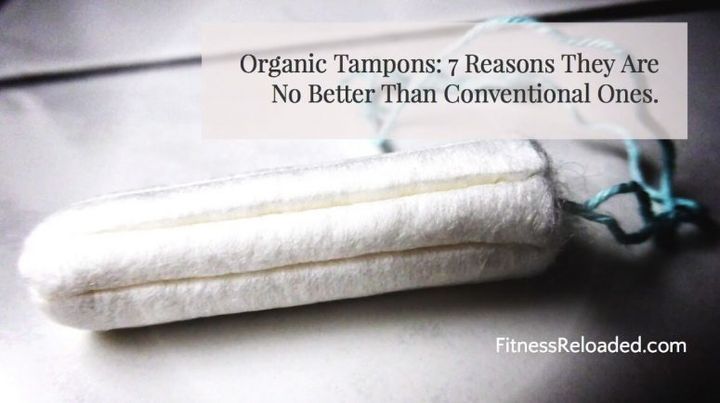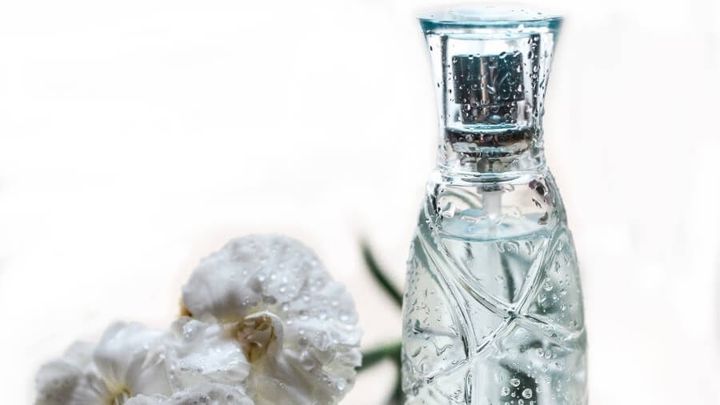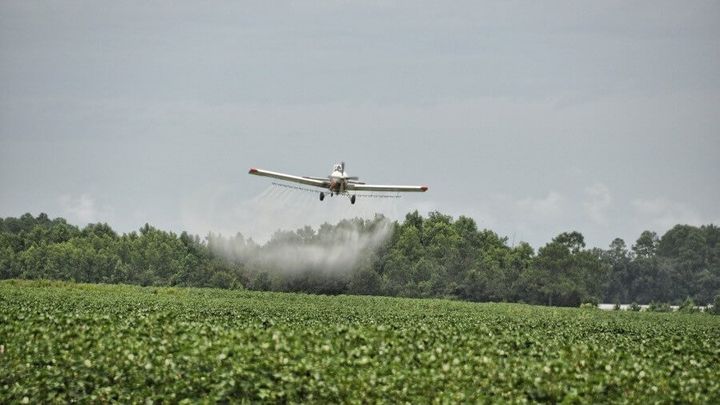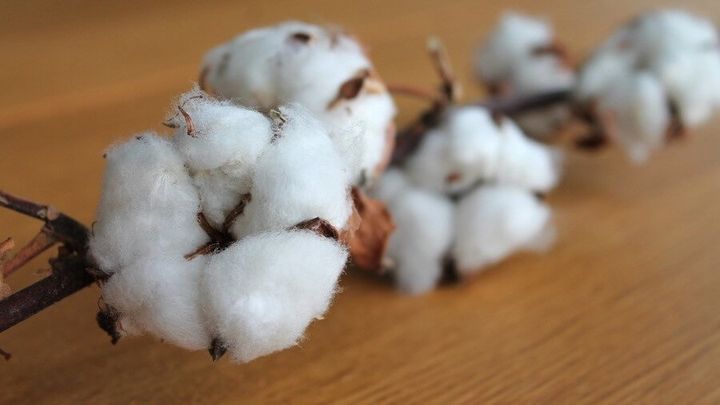
Women have a MILLION things to worry about when it comes to their vaginas.
- Will it go back after I have this baby?
- Does it smell weird?
- Does it look funny?
- Can you see camel toe through these yoga pants?
- Are blood clots the size of chicken nuggets normal?
- Is my daughter worrying about the “panty challenge” on Instagram… and by god, I will kill her.
Were you worried about putting CHEMICALS where BABIES COME FROM? No?
Well, now you can be! “Chemophobia” or an irrational fear of chemicals is being stoked by the organic industry in a slick, celebrity-studded marketing campaign aiming to get up-close and personal with us, and I do mean personal.
Maya Rudolph (she’s an “every” girl, just like you and me of course!) croons in her low, somewhat off-key comedic-voice about how the feminine care should be free of perfumes, unnecessary chemicals and chlorine processing for nearly two minutes and by the time she is done, you are filled with self-doubt and new fears about our most intimate lady parts.
Why would anyone want to make you worry about putting chemicals in your vagina? The organic industry would.
It is BIG business. U.S. organic sales set a new record in 2015 of $43.3 billion in sales.
For example, in 2012, The Honest Company, a company that started out with natural baby products but has since expanded, made $150 million in revenues last year.
Industry insiders are predicting revenues in excess of $250 million for this year, with an overall valuation of $1 billion dollars
The feminine hygiene industry in the U.S. alone is $3 billion/year. This is a good chunk to add to this growing industry.
Let’s take a look at some of the organic tampons marketing claims and the science behind them.
#1. Organic tampons are healthier and safer than non-organic: Not really.
Most of the marketing claims I found say that organic pads and tampons are “healthier and safer for your body.”
Do you know who worries about things you stick in your vagina more than you ever could? The FDA. That’s right. Tampons are actually a class II medical device– heavily regulated by the Federal Food and Drug Administration.
Just like something you stick inside your body right next to sensitive mucus membranes and where you grow your babies should be. Regular tampons, pads and other feminine hygiene products do not use toxic chemicals.

The government actually IS in our vaginas. FDA regulations cover every aspect from selection of tampon size and absorbency, to tampon insertion methods to how tampons should be worn and the wear-time, to tampon removal and disposal.
Clinical testing for all tampons must provide proof that meets rigorous criteria for:
- irritation,
- allergy,
- effects on vaginal microflora,
- abrasions,
- ulceration,
- laceration and
- residual fiber retention.
#2. Organic tampons are made without chlorine bleach: same for conventional ones.
I found some variation of this marketing claim on every website I visited:
“Made without bleach, pesticide-treated cotton, fragrances, deodorants, rayon, or synthetic superabsorbents – everything you need, nothing you don’t!”
Is this claim based in science or is it more fiction?
First lets tackle chlorine bleach and rayon, because they are really one and the same issue. We worry about bleach in our home cleaning products, coffee filters, and face tissues.

So why not in our feminine hygiene products? In the 1980s, after the creation of the Environmental Protection Agency we discovered many environmental contaminants. Dioxin was one of them.
In 1994, the Environmental Protection Agency (EPA) issued a report stating that dioxins are known to cause cancer in animals, and probably cause cancer in people.
Dioxin is the byproduct of the process from converting wood pulp into a synthetic fiber called Rayon, which is also used for fabric.
Tampons are usually made of cotton and rayon. Up until the late 1990’s, bleaching the wood pulp resulted in traces of dioxin in tampons, but that method has since been replaced with a chlorine-free bleaching process for all tampons.
In general, the dioxin hazard has been reduced because of the new, non-chlorine bleaching methods, but it can still be detected in low levels tampons — even those made of 100% cotton.
This is due to the previous decades of pollution; dioxin can be found in the air, water, and ground.
Therefore, small amounts of dioxin may be present in the cotton or wood pulp raw materials used to make tampons, regardless of whether they are organic or not.
The FDA requires all tampon manufacturers to monitor dioxin levels in their finished products.
#3. Organic tampons are made without synthetic supeabsoerbents: Same for conventional tampons!
What about synthetic superabsorbents? That sounds legit, right?! In the 1980s some superabsorbent tampons were associated with “toxic shock syndrome,” a systemic blood infection.
However, the CDC and FDA moved quickly to protect our health after this complication was discovered and the superabsorbent materials have been banned in ALL tampons since then.
#4. Organic tampons are fragnance-free: You can find conventional fragrance-free tampons as well!

The fragrances used in tampons do meet the strict safety standards set by the International Fragrance Association, and are tested extensively for irritation.
However, some people may have extremely sensitive skin and want to avoid fragrances and deodorants altogether. There are plenty unscented conventional choices available by all major brands.
#5. Organic tampons are pesticide-free: False! Organic uses pesticides, sometimes even more toxic than the ones used in conventional crops.

And what about pesticide levels in cotton? Cotton is neither a fruit nor a vegetable, it is a seed crop; like sunflowers, soybeans, or safflower.
However, cotton is regulated as a food crop by the FDA: The Food & Drug Administration states in its Code of Federal Regulations: Title 21: Food and Drugs, Part 172 that “cottonseed products may be used for human consumption.”
As such, it is a subject to the same rigorous government oversight as food crops, even if it is to be used for textile purposes.
If you don’t trust our own FDA to test accurately for harmful residues, then perhaps use can trust the German Bremmer Cotton Exchange, which carries out extensive testing of cottons from all over the world according to the Eco-Tex 100 Standards (a global standards organization headquartered in Zurich, Switzerland).
They have found that US cotton is among the cleanest in the world, no matter how it is produced, with pesticide levels nearly undetectable.
Over 60 chemicals, both “naturally derived” AND synthetic, are allowed in “organic” production methods. Some natural pesticides can be even more dangerous that synthetic ones, neem oil, used in organic cotton farming is a great example.
In a study funded by the Natural Science and Engineering Council of Canada, six different insecticides were analyzed: four were synthetic and two organic; the organic ones turned out to be more toxic than their synthetic counterparts.
#6. Organic tampons are made with GOTS Certified Organic Cotton: This is worse for the environment.

Many of the brands I found use “100% GOTS Certified Organic Cotton.”
Sounds like it is good for the environment, right? Wrong.
The Global Organic Textile Standard (GOTS) is one of the world’s leading processing standard for textiles made from organic fibers. It defines high-level environmental criteria along the entire organic textiles supply chain and requires compliance with social criteria as well. Organic cotton must be non-GMO.
Like many non-gmo crops, non-GMO cotton suffers from a “resources” problem, it uses too much of them and yields a much smaller amount of cotton. The yield for non-GMO cotton crops is roughly 50% less than conventional cotton (for area of land.) This means you need double the land to produce the same amount of cotton.
- The requirement for more land and more resources means that organic cotton has a much larger “ecological footprint” than conventional cotton.
- On top of that, organic cotton is necessarily sprayed insecticide application for organic cotton (usually externally applied Bt protein,) and these additional applications require more tractor passes, which contributes to the large carbon footprint of organic cotton.
- Lastly, organic cotton growers can’t use synthetic herbicides (or GMO Round-Up Ready seeds). Cotton is a very sensitive and slow growing crop that will produce NO yield if weeds are allowed to grow near the trees. Organic weed control methods are entirely dependent on tillage, tractor passes and rotary hoes. Tillage and cultivation is necessary two to three times per week. This means more fuel emissions, wear and tear on equipment, with a higher carbon footprint.
GMO cotton varieties produce 25-50% more yield worldwide, compared to the cotton varieties grown 40 years ago. The use of genetically improved (Bt trait) cotton strains has allowed some countries to reduce their cotton insecticide use by up to 90%! They are drought resistant; therefore they need less irrigation and use less water.
The bottom line is these miracle, good for the environment, GMO cotton varieties cannot be used to produce “100% GOTS certified organic cotton.”
#7. Organic tampons include no phtalates or BPA – these don’t cause issues in conventional tampons either.

The last of the claims I found center around the applicator itself. For example “Made without phthalates, the innovative compact plastic tampon applicator is made from 90%+ bio-based materials” and “BPA-Free plastic applicators”
Both BPA and phthalates are “endocrine disruptors.” Endocrine disruptors are chemicals that may interfere with the body’s endocrine system and produce adverse developmental, reproductive, neurological, and immune effects.
A wide variety of products are used by women in the genital area and, therefore, come into contact with the genital mucosa. The largest category is those used for cleanliness and odor control, such as soaps and body washes, douches, premoistened wipes and towelettes, dusting powder and deodorant sprays.
The next largest are those that absorb fluids, such as products used for menstrual protection (tampons, pads and panty liners) and incontinence protection. Lubricants and moisturizers, and aesthetic products (hair removal products and dyes), and fungal treatments are also fairly common.
Studies have looked at the urine of women who use these products, and found that the only substantial increase in the level of phthalates (not whether this level relates to any disorder or condition what-so-ever) is related to douching, NOT to feminine hygiene product use.
Organic pads and tampons: They are no better for you or the environment.
So, should you buy organic tampons and organic feminine hygiene products? In many states, feminine hygiene products are already taxed as “luxury items” in most states, and going green “down there” can double those costs:
- A 10-pack of Honest Company regular pads costs $6, whereas a 16-pack of Always goes for just over $3.
- For $7, you could get 16 Honest Company organic tampons or 34 from Kotex.
Going organic is no better for you or the environment. But the marketing is as brilliant as the vajingle is catchy.
Now join the conversation @Fitness Reloaded leave us a comment and let us know: Are you buying organic cotton tampons? Why/why not?
